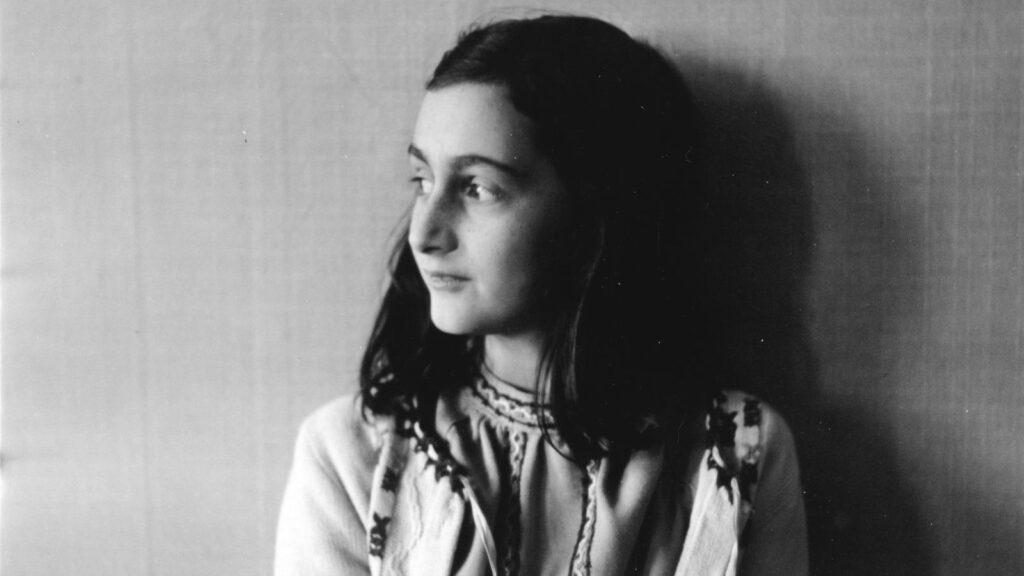"The diary of Anne Frank serves as a poignant record of life in hiding under Nazi rule, ensuring her legacy as a symbol of the Holocaust's countless victims."

Anne Frank is widely recognised as one of the most prominent victims of the Holocaust. Throughout the Nazi occupation of the Netherlands, Anne documented her experiences of life in hiding under Nazi persecution.
Her diary provides a poignant glimpse into the daily struggles and emotional turmoil faced by her family and others in hiding during Adolf Hitler’s reign of terror. Through her words, the world has come to know the Frank family and their companions in the Secret Annex.
After 25 months of concealment, tragedy struck when the hiding place was discovered. The circumstances surrounding this discovery remain shrouded in mystery. Questions persist about how the Gestapo learned of the hiding place and who may have betrayed the occupants.
Early Life and Family

Annelies Marie Frank, better known as Anne Frank, was born on June 12, 1929, in Frankfurt, Germany. She was the second daughter of Otto and Edith Frank. Anne’s father, Otto, had served as a lieutenant in the German army during World War I and later became a businessman in Germany and the Netherlands. Otto and Edith were dedicated parents with a strong interest in scholarly pursuits, and they maintained an extensive library at home. This environment encouraged both Anne and her older sister Margot, who was three years Anne’s senior, to develop a love for reading.
The Frank family lived in a diverse and assimilated community where Jewish and non-Jewish citizens of various religious backgrounds coexisted. Although the Franks identified as Jewish, they did not strictly adhere to all Jewish customs and traditions. This liberal outlook shaped Anne’s upbringing in a culturally rich and open-minded household.
The 1920s were a challenging time for Germany, as the country grappled with severe economic difficulties due in large part to the harsh sanctions imposed by the Treaty of Versailles, which ended World War I. Amidst this economic turmoil, the National German Socialist Workers Party, commonly known as the Nazi Party and led by Adolf Hitler, gained significant influence. By 1933, the Nazis had seized control of the German government, and their virulently anti-Semitic policies began to take effect.
As the political climate in Germany deteriorated, Otto Frank foresaw the impending dangers and fled to Amsterdam in the Netherlands, where he had established business connections. The rest of the Frank family soon followed, with Anne being the last to join them in February 1934, after spending some time with her grandparents in Aachen. This move marked the beginning of a new chapter in Anne’s life, one that would be profoundly shaped by the turbulent events of the era.
In Hiding Place

After leaving Germany, the Franks found relief in their new hometown of Amsterdam, where they could once again enjoy freedom. Otto Frank became the managing director of the Dutch Opekta Company, which manufactured products used in making jam. Anne started attending Amsterdam’s Sixth Montessori School in 1934, leading a relatively happy and normal childhood. She had many friends and was known for being a bright and inquisitive student.
However, their peaceful life was short-lived. On September 1, 1939, Nazi Germany invaded Poland, sparking the global conflict that would become World War II. The situation worsened on May 10, 1940, when the German army invaded the Netherlands. The Dutch surrendered five days later, beginning the Nazi occupation of the Netherlands.
In July 1942, Anne and her family were forced to go into hiding to escape the escalating persecution of Jews. They were eventually joined by four other Jews: Hermann, Auguste, Peter van Pels, and Fritz Pfeffer. For two years, they lived in a secret apartment at 263 Prinsengracht Street, hidden behind the business offices where Otto Frank had worked as a company director. Anne referred to this hiding place in her diary as the Secret Annex.
While in hiding, Anne kept a detailed diary where she recorded her fears, hopes, and daily experiences. This diary has since become a powerful testament to the resilience and courage of those who endured the horrors of the Holocaust.
Deported to Auschwitz

On August 4, 1944, the German SS and police discovered the Frank family’s hiding place. Along with the residents of the Secret Annex, the police also arrested two of their helpers. The exact reason for this raid remains unclear. Some speculate that the Germans found the hiding place by chance while investigating reports of illegal activities and fraud involving ration coupons at the house. However, the most widely accepted theory is that the police were tipped off by an anonymous caller, whose identity remains unknown to this day.
Following their arrest, the people from the hiding place were transported to the Auschwitz concentration camp in Poland. This marked the beginning of a harrowing journey that would separate families and test their endurance in unimaginable ways.
At Auschwitz, the men and women were separated, marking the last time Otto Frank saw his wife and daughters. After a month of grueling labour, Anne and her sister Margot were transferred once again. They were sent to the Bergen-Belsen concentration camp in Germany, while their parents stayed behind in Auschwitz. Tragically, Edith Frank fell ill and died at Auschwitz on January 6, 1945.
The conditions at Bergen-Belsen were appalling. Sanitation was terrible, food was scarce, and the camp was plagued by cold, wet weather and rampant disease. In these harsh conditions, Anne and Margot contracted typhus. In February 1945, both sisters succumbed to the disease—Margot first, followed shortly by Anne. Anne was just 15 years old at the time of her death.
By the end of the war, Otto Frank emerged as the sole survivor of his family and the only one from the Secret Annex to survive. He was liberated from Auschwitz by the Russians and, during his long journey back to the Netherlands, he learned of the deaths of his wife and daughters.
Becoming a Historical Icon

When Otto Frank returned to Amsterdam after the war, he found Anne’s diary, which had been saved by Miep Gies. Anne’s writing made a deep impression on Otto, especially her aspirations of becoming a writer or a journalist. Moved by her words and determined to honour her memory, Otto decided to publish her diary.
On June 25, 1947, “The Diary of a Young Girl” was published. Since then, it has been translated into more than 70 languages. Various editions, as well as screen and stage adaptations, have been created worldwide. Commonly referred to as “The Diary of Anne Frank,” it remains one of the most moving and widely read firsthand accounts of the Jewish experience during the Holocaust.
Otto Frank passed away in 1980. He had always hoped that readers of the diary would become more aware of the dangers of discrimination and racism. Today, the home where the Franks hid in Amsterdam, now known as the Anne Frank House, draws more than a million visitors each year. The enduring impact of Anne’s diary continues to educate and inspire people around the globe.
For more stories about inspirational people, check out George Goh Ching Wah: The Successful Journey from Factory Sweeper to Billionaire and Greta Thunberg’s Influence on Today’s Teen Climate Activists
